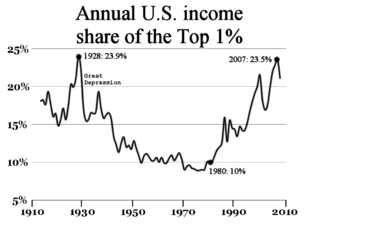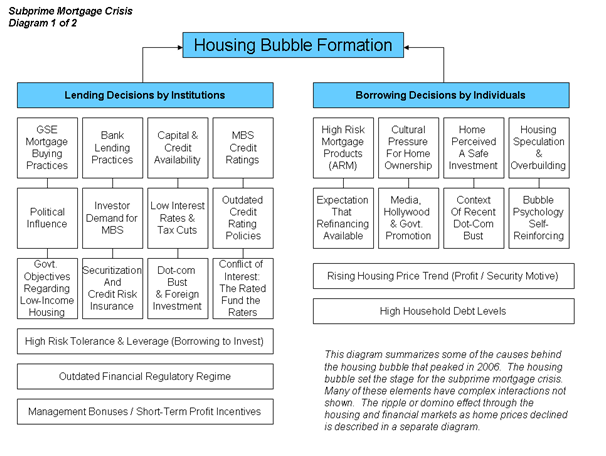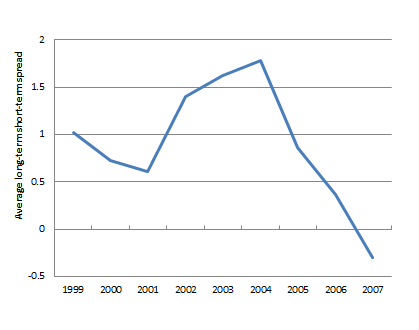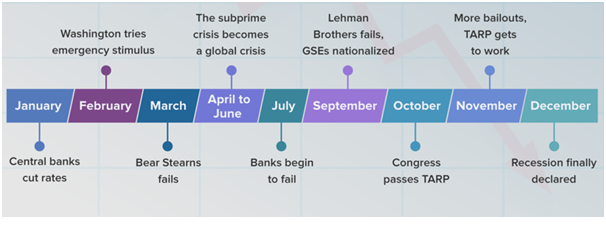Economics Assignment: Report On Financial Crisis Of 2007-2008
Question
Task:
Prepare an economics assignment addressing the following questions:
1. The financial crisis of 2007–2008 is considered as the worst financial crisis since the Great Depression.
a) Billions of pounds from taxpayers helped save the banking system from collapsing. This solution led to anger since the public had to bail out bankers, who were perceived as risk-taking and greedy. Discuss the government policies to get the economy out of recession.
b) The financial system has undergone several major reforms since the financial crisis. The goal was to restore public trust and confidence in the banking sector. How have these changes affected the supply of funds for investment?
Answer
Executive Summary
As explored in the following sections of economics assignment, the financial crises occur in various forms. These include banking system’s collapse, crashing of the stock market and credit panic. One such financial crisis which the world has witnessed is the Global Financial Crisis of 2007-2008. The crisis occurred due to collapse of the housing bubble of US. This was followed by the subprime mortgage lending crisis and the collapse of the Lehman Brothers, investment bank. These series of crisis led to a huge financial crisis subsequently leading to the economic recession, which affected the entire world. The essay has clearly outlined the causes of the global financial crisis, the strategies and measures taken, the resentment of the public and their loss of faith. The paper further discussed the measures that were taken post crisis and how the recovery took place. Though the US and global economy was uplifted from the financial crisis within eighteen months, the after effects have been felt in the later years. Thus, controlled banking and financial operations are recommended to prevent such crisis from reoccurring.
Introduction
According to Bakkar, Rugemintwariand Tarazi(2020), a financial crisis refers to the set of events which result in certain financial assets losing their nominal value. During the 19th as well as the 20th centuries, there were several financial crises which were associated with the panics related to banking and consequent recessions coinciding with such banking panics. The financial crisis of 2007 -2008 referred to as the global financial crisis is one of the most severe economic crises the world has ever witnessed. Since the Great Depression, this was the most serious economic or financial crisis. In this essay, the financial crisis and events associated with the crisis will be discussed.
Global Financial Crisis
During the financial crisis of 2007-2008, the taxpayers helped in saving the banking system from a drastic collapse. The billions of pounds paid out by the taxpayers was a saviour in the time of the crisis. However, this solution to the problem led to great resentment among the public. The public was angry as they had to bail out the bankers. These bankers were greedy and risk takers. In this crisis situation, the government policies helped in getting the economy out of the recession (Degl'Innocentiet al, 2018). Prior to the financial crisis of 2007-2008, there were certain financial deregulations. There were various factors which led to the financial industry of U.S to reach a stage where the government of the nation was supporting few of the largest banks of the country with hundreds of billion dollars in the form of financial assistance. Out of these financial assistance strategies, the most talked about strategy were the deregulations. The financial crisis of 2007-2008 was triggered by the deregulation of the financial sector. Due to such deregulation, the banks were permitted to engage in hedging the funds which traded with the derivatives. As the value of the derivatives started crumbling, the banks had to stop lending to other banks (Erfani and Vasigh, 2018). This gradually initiated the financial crisis which eventually caused the global financial crisis. The Great Recession during 2007-2008 witnessed one of the worst financial declines in the history of US. This recession or crisis lasted from 2007 December until 2019 June. The housing market collapsed and the event was fuelled by the easy credits, low interest rates, toxic subprime mortgages and insufficient regulations. These caused the economic crisis to aggravate.The below given graph shows the annual income share of the top 1 percent in US.

(Source:Wanget al, 2021)
The global financial crisis of 2008-2008 originated in the United States. This crisis was also termed as the subprime mortgage crisis. The severe liquidity contractions took place in the global financial markets. However, the roots of the crisis were in the US. The collapse of the housing market of the United States mainly sowed the seeds of this global financial crisis. As per Ogbuabor, OrjiAnekeand Charles(2019), the financial crisis of 2007-2008 originated in the United States, however, the crisis became global. The financial crisis and the economic collapse affected the financial markets of the entire world. The crisis began with the bubble of the housing market, which was created by the excessive load generated by the mortgage-backed securities. The below given diagram is the summary of the causes that led to the housing bubble.

(Source: Sensierand Devine, 2020)
These impelled the high-risk loans. The act of giving off loans recklessly resulted in the unprecedented loans summing up as default. The loans bundled up and led to the losses of the financial institutions which failed. The governmental bailouts helped these financial institutions. This financial crisis became a global crisis overnight. The crisis started in US as a subprime mortgage lending crisis in 2007. However, by the beginning of 2008, the crisis spread to the global banking sector. The global crisis was aggravated by the failure of the Lehman Brothers, investment bank during September 2008.

(Source: Jebabli, Kouaissahand Arouri, 2021)
The above given graph illustrates the gradual, yearly build-up of the crisis. There were a series of events or crises which led the Great Recession. The precipitating and main factor behind the financial crisis of 2007-2008 was the bursting of the housing bubble of the United States. This crisis was followed by the subprime mortgage crisis. Furthermore, the investment bank of Lehman Brothers collapsed which resulted in another crisis (De Francescoand Maggetti, 2018). The government had to intervene to resolve the financial crisis of 2007-2008 which originated in the US. The Troubled Asset Relief Program (TARP) was introduced by George W. Bush, the then President of US from Congress, in the 2008 on 3rd October in response to the global financial crisis. The government of the United States introduced TARP in order to purchase the toxic assets. The program also aimed to purchase the toxic equity leading to the crisis (Jebabli, Kouaissahand Arouri, 2021). These assets and equities were purchased from the financial institutions so that the financial sector would be strengthened. Until the collapse of the Lehman Brothers in September 2008, the policy responses of the government was limited to lowering the interest rates by the central bank, which targeted to stimulate the economic activities. The aim was to boost the economic activities which had slowed down during the late 2007s (Eddison Waltersand Djokic, 2019). However, after Lehman Brothers collapse, the need of aggressive government intervention increased. The government ensured that the interest rates are lowered and controlled by the central bank. The financial securities were purchased to support the dysfunctional financial markets. The government also increased its spending so that the supply, demand and employment could be boosted across the economies. To address the crisis, the oversight of the financial institutions and banks was strengthened.

(Source: Erfani and Vasigh, 2018)
Once the economy started recovering from the global financial crisis, the restrictions were relaxed and the strict control over the financial institutions was removed. The interest rates started increasing gradually as the central bank stopped controlling or lowering them (Papadopoulos, 2019). The government also stopped incurring added expenses to boost the economic activities. The economy started taking its own course to recover. The economy was already brought out of the recession and crisis. It was given its own healing time to get the economy back on track. The recessionary impact lasted after 2008 but the economy was responding positively to it. As the economy started recovering from the global financial crisis, the conventional policies were gradually replaced by unconventional policies. The policy responses were relaxed but the unconventional monetary policies took its place. The unconventional monetary policies include forward guidance, quantitative easing and collateral adjustments. As stated by Jebabli, Kouaissahand Arouri (2021), the rate of unemployment peaked at 10 percent during October 2009. This did not get back to its usual pre-recession rate until 2016 May. The main reason for the delayed or slow recovery from the global financial crisis was that the businesses as well as the individuals were paying back their debts for several years at a stretch. This reduced or ceased the chances pf investing, spending or borrowing which was the usual scenario in the pre-recession period. In the absence of these activities, the economic activities reduced in scale and failed to uplift the economic conditions. Given below is the illustration of the timeline for the global financial crisis.
As perPaweta (2018), in the post financial crisis period, the financial system has undergone several changes and various reforms were executed. The main aim of the reforms was to restore the confidence and trust of the public in the banking sector. These changes in the financial system had left an impact on the supply of investment funds. There were various regulations which were imposed to get the economy out of the global financial crisis. The regulatory responses ensured that the interactions of the banks were reduced through the shadow banking entities. The exposures of the banks to the single counterparties were limited. The regulatory response also restricted the risk-based capital requirements for the exposure of the banks to the funds. Few other common regulatory responses of the MMF were introduced and imposed to reduce the adversity and severity of the global financial crisis. There were measures undertaken for assessment and alignment of the incentives that were linked to the securitisation. These measures included enhancing of the disclosure requirements as well as the rules for risk retention. The regulatory responses also tried to dampen the procyclical incentives and risks which were related to the securities’ lending and repos. This was done so that it did not amplify the strains of funding during the crisis and stress in the financial market. There were regulations on the security financing which comprised central clearing for improving the market structure, effective data collection and reporting, cash collateral reinvestment subject to minimum standards (Sanoran, 2018). In the post financial crisis period, the financial system has gone through far-reaching amendments. These changes were mainly pertaining to the shift in the way in which the intermediaries managed their balance sheets. The regulations impacted the liquidity as well as credit availability and leveraging. The aim of the regulations was to make the financial system safer incurring limited unintended costs. The liquidity regulations were imposed by the banks to assure that the crisis does not relapse. The restrictions on banking liquidity would ensure that the banks have the required assets in hand. This would prevent the disruptions of banking liquidity which had the potential of leading to a crisis. In the United States, the banks are the institutions which are highly leveraged. The regulations in the post crisis period were levied on the banks so that the amount of money a bank can lend is restricted (White et al, 2018). The lending relative to the capital devoted by the bank to its assets was controlled. The banks were expected to have more assets in hand than they gave out as loans. This was done so that the banks could ‘write down’ the portion of their capital assets in case the value of the total assets dropped. There were other reforms which had been imposed in response to the global financial crisis, which include bank levy and ring fencing. As per Wang et al(2021), bank levy refers to the situation which allows the bank to freeze a debtor’s account. This account remains ‘freeze’ until the debt sought-after is repaid completely. The banks even charge a fee from their customers to process the bank levy to their accounts. The unpaid debts had to be controlled in post crisis period and so bank levy was imposed. Ring fencing on the other hand was done as a form of reform so that the banks’ retail side was sheltered from all forms of shock. This would protect the access to loans and savings and keep the ‘ability to pay’ protected (Zimmerman and Stone, 2018). The reforms were meant to provide adequate support to the banking and financial sector. However, the reforms did not generate the desired results. This is because, the debts that had been incurred during the crisis were being paid back over a span. The unemployment rate was very high due to the crisis. The economy of US and the other nations affected by the global financial crisis took quite some time to recover. The reforms along with TARP, Economic Stimulus Plan and ARRA aimed at uplifting the financial sectors from the global and national economic crisis (Zhang, 2020). During the global financial crisis, the lending declined across all forms of loans. This applied to the non-investment grade and investment grade, credit lines and term loans. The loans given out for general purposes in corporate and corporate restructuring fell. The working capital reduced. The investment was highly affected by the global financial crisis. The values of the stocks declined during the crisis. Over the short run, the global financial crisis of 2007-2008 impacted the banking sector. The crisis caused the banks to lose their money on the default mortgages. This led to the freezing of the interbank lending. The credits available for the businesses as well as consumers started drying up. Therefore, the interest rates had to be lowered post crisis to encourage investments. According to Uurlu(2020), the leverage in the households and banks rose during the crisis, along with the mortgage backed securities and housing prices. During the crisis, the asset prices and leverages collapsed. In the post crisis period, the asset and leverage prices started recovering. In the post crisis period, the investors who had lost their trust and confidence in the banking system started being sceptical about their investment decisions. They worried more about the threat of financial collapse and the prevailing economic backdrop. The flow of direct investments and portfolios reduced significantly post crisis. The collapse stock market started recovering gradually (Sensierand Devine, 2020).
Conclusion
It can be concluded that the global financial crisis was one of the most severe financial crisis the world had ever witnessed. This led to a long span of economic recession which impacted the global economy and its banking and financial sectors. The immediate policy responses, reforms and regulatory measures controlled the crisis and facilitated recovery. The situation changed in the post crisis period as investment, lending, employment, production, etc. was adversely affected by the financial crisis.
References
Bakkar, Y., Rugemintwari, C. and Tarazi, A., 2020. Charter value, risk-taking and systemic risk in banking before and after the global financial crisis of 2007-2008. Applied Economics, 52(36), pp.3898-3918.
De Francesco, F. and Maggetti, M., 2018.Assessing disproportionality: indexes of policy responses to the 2007–2008 banking crisis. Policy sciences, 51(1), pp.17-38.
Degl'Innocenti, M., Grant, K., Ševi, A. and Tzeremes, N.G., 2018. Financial stability, competitiveness and banks' innovation capacity: Evidence from the Global Financial Crisis. International review of financial analysis, 59, pp.35-46.
Eddison Walters, D.B.A. and Djokic, B., 2019. No real estate bubble preceding global financial crisis: Eddison Walters risk expectation theory of the global financial crisis of 2007 and 2008. Journal of International Business and Economics, 7(2), pp.1-11.
Erfani, G. and Vasigh, B., 2018. The impact of the global financial crisis on profitability of the banking industry: a comparative analysis. Economics assignmentEconomies, 6(4), p.66.
Jebabli, I., Kouaissah, N. and Arouri, M., 2021. Volatility spillovers between stock and energy markets during crises: A comparative assessment between the 2008 global financial crisis and the COVID-19 pandemic crisis. Finance Research Letters, p.102363.
Ogbuabor, J.E., Orji, A., Aneke, G.C. and Charles, M.O., 2019. Did the global financial crisis alter the oil–gasoline price relationship. Economics assignmentEmpirical Economics, 57(4), pp.1171-1200.
Papadopoulos, A.G., 2019. Rural planning and the financial crisis.In The Routledge companion to rural planning (pp. 183-191).Routledge.
Pawta, B., 2018. Impact of the global financial crisis on the business cycle in the Visegrad group. Entrepreneurial Business and Economics Review, 6(3), pp.43-58.
Sanoran, K.L., 2018. Auditors’ going concern reporting accuracy during and after the global financial crisis. Journal of Contemporary Accounting & Economics, 14(2), pp.164-178.
Sensier, M. and Devine, F., 2020. Understanding regional economic performance and resilience in the UK: Trends since the global financial crisis. National Institute Economic Review, 253, pp.R18-R28.
Uurlu, F.S., 2020. Did the 2008 global financial crisis affect the banking credits A Case of Regions of Turkey. International Journal of Humanities and Social Development Research, 4(1), pp.74-82.
Wang, C., Wang, D., Abbas, J., Duan, K. and Mubeen, R., 2021. Global financial crisis, smart lockdown strategies, and the COVID-19 spillover impacts: A global perspective implications from Southeast Asia. Frontiers in Psychiatry, 12.
White, B., Ellis, C., Jones, W., Moran, W. and Simpson, K., 2018.The effect of the global financial crisis on preventable hospitalizations among the homeless in New York State. Journal of health services research & policy, 23(2), pp.80-86.
Zhang, Y., 2020. Conditional conservatism and trade credit during the global financial crisis. Journal of Accounting and Public Policy, 39(4), p.106728.
Zimmerman, E. and Stone, D., 2018. ASEAN think tanks, policy change and economic cooperation: from the Asian financial crisis to the global financial crisis. Policy and Society, 37(2), pp.260-275.












